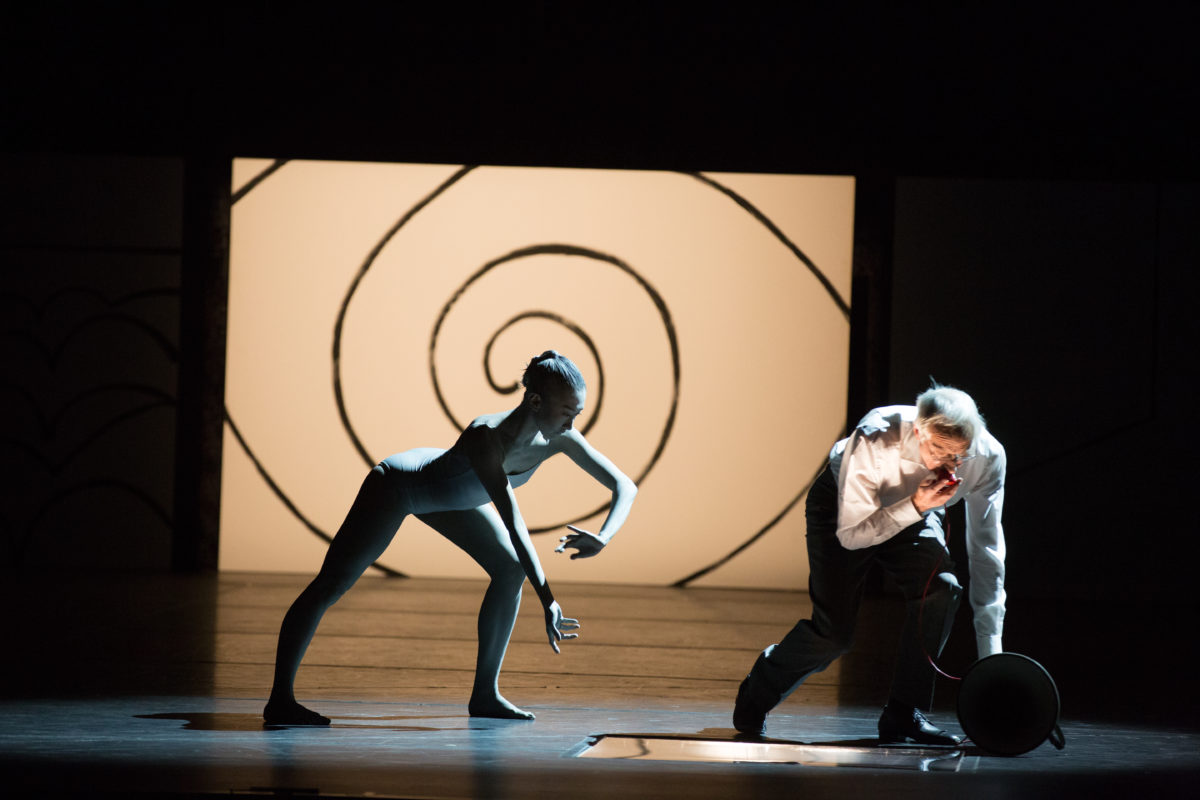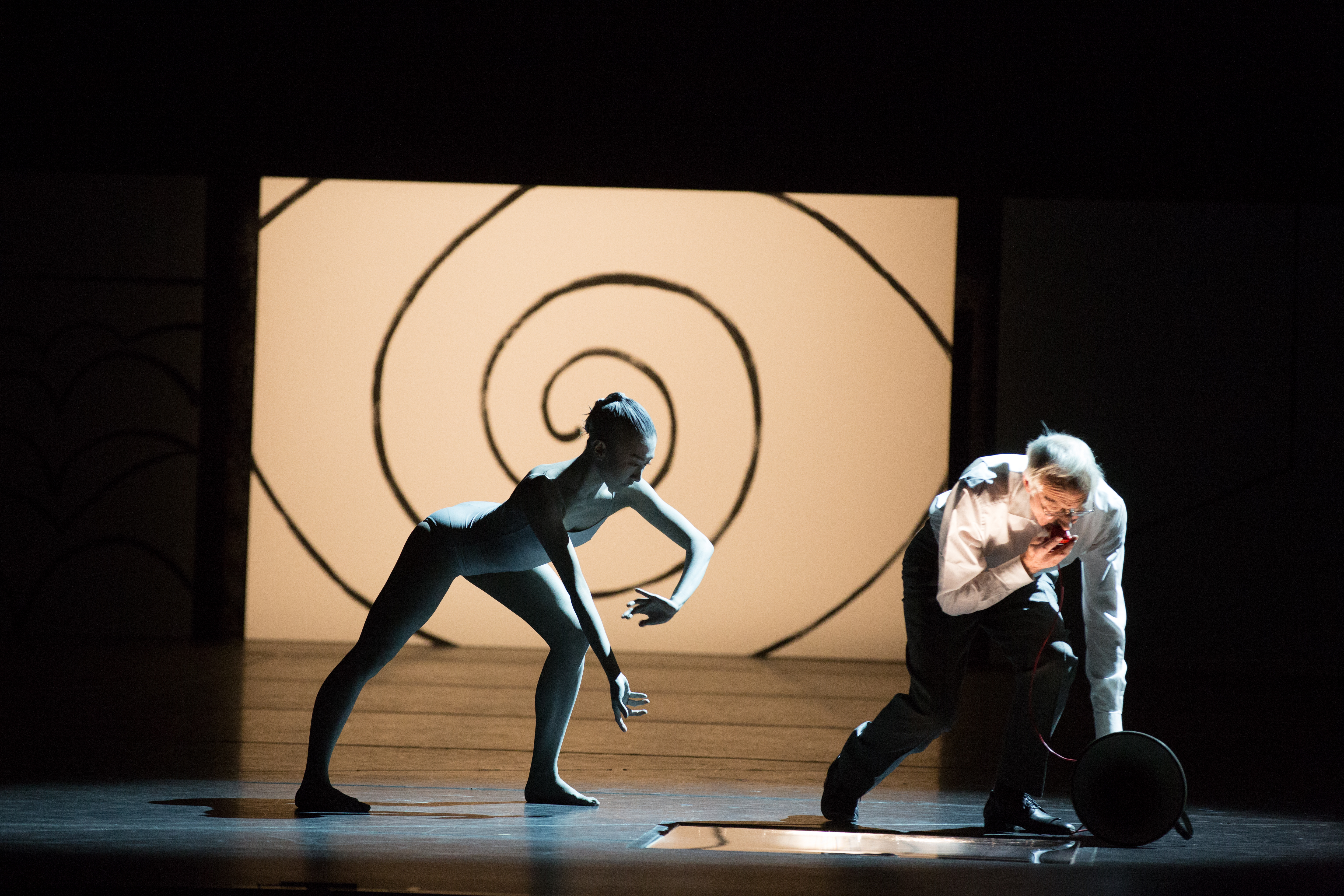
Playing through March 5, the Boston Ballet’s “Artifact” portrays a startling battle between past and present for control of the collective consciousness. The first show of a five-year collaboration with star choreographer William Forsythe, “Artifact” delivers a chilling and refreshingly contemporary performance.
The piece originally debuted in 1984 at Ballet Frankfurt, though Forsythe made significant changes for its North American debut at Boston Ballet, adding a whole new act just days before the show opened. Three characters work amid the corps de ballet during the show: The Woman in Historical Costume played by Forsythe’s wife, Dana Caspersen; The Woman in Gray played by Caralin Curcio; and The Man with a Megaphone played by Nicholas Champion. Both Caspersen and Champion performed in the original premiere of the show 33 years ago. Champion even wears the same pants worn in the original production.
Despite the well-made trousers, much has changed since then. The Woman in Historical Costume and The Man with a Megaphone walk about the dancers and interact with them, all the while speaking quick, convoluted gibberish sentences. “They stepped outside. I see. They know what you said. They see what you think. The rocks. The dust. The dust. They stepped outside,” The Woman in Historical Dress sing-speaks. Language becomes meaningless in this rhythmic drivel. The vernacular bears striking resemblance to Orwell’s doublespeak in “1984.”
This brainwashing sentiment also appears in the corps. Apart from two couples, the corps operates by imitating The Woman in Gray. In the second act, though she is set to a musical tempo, Curcio is improvising and the corps must move with her in time without knowing what she might be doing. Not only does this show the exemplary skill of the cast, who are able to make Curcio’s movements look seamlessly choreographed, it speaks to a culture of mindlessly following a leader.
The Woman in Historical Costume and The Man with a Megaphone are at odds. Champion’s character wants to move logically and geometrically forward, while Caspersen’s seeks creative freedom. In the third act the two characters sit in chairs across from each other, having a meaningless debate with the rhythm of a rap battle. Each has a group of dancers behind them, stomping, clapping and singing, waiting for the victor to direct them.
In the fourth act the two characters face the line of dancers. “All that’s left is the how,” says Champion. “Step.” Caspersen claps. The dancers move and the lights flick off.
Ultimately, it takes both the rigidity of the establishment and the creativity of the artists to make the dancers move.

